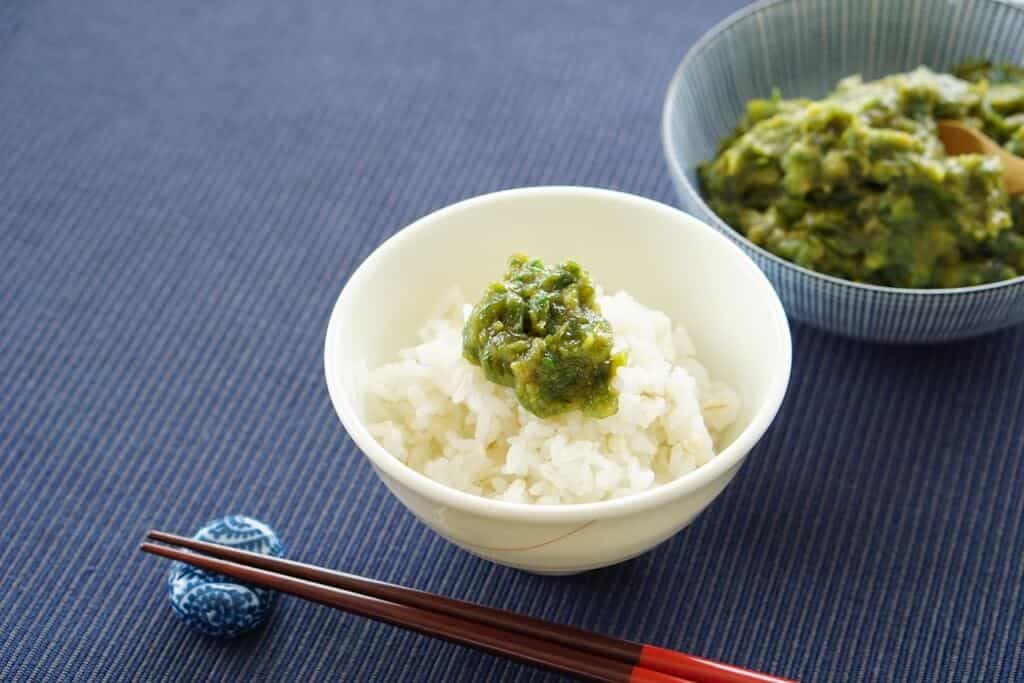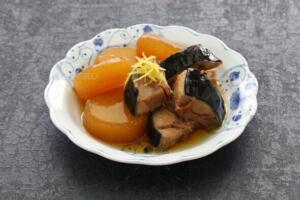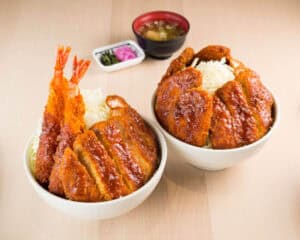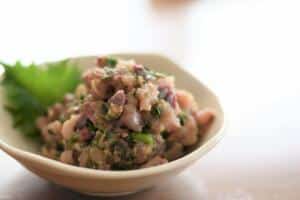Do you know what shirasu is? Dry goods stores heap “dried shirasu” in their storefronts. This fish, rich in protein, vitamin D, calcium, and magnesium, can be eaten with bones. The name may differ depending on the region, but in order of the highest moisture content, it goes by kamaage shirasu, dried shiras, or semi-dried young sardines. Fish called Shirouo and Shirauo may have similar names and appearances, but they are completely different species from these three.
The popular whitebait of Japan
In Japan, whitebait is called shirasu, which is small immature fish. They are less than 2cm in length, typically sardines, but can also be the fry of herring, sweet fish, conger eel, or others. This tiny fish ingredient can be found in almost all Japanese supermarkets. You can eat it raw or boiled. If dried after being boiled then the shirasu turns into chirimen. There are many names depending on how long their dried or the region. Speaking of regions, this ingredient is popular and famous in the Kanagawa prefecture.


Kanagawa and the Shirasu season
During the shirasu season of spring and fall you will see plenty of advertising for raw shirasu at shops in the Kanagawa prefecture. It can be caught at any time, but it is most delicious in those seasons. They do a great job of fishing it in Sagami Bay. A specialty in Kanagawa is the shirasu-don, which is the shirasu on top of rice. The shirasu rice bowl is a must try for people in that region. They also have the shirasu tsukimi-don, meaning moon-viewing shirasu rice bowl. It has a raw egg yolk in the center which represents the moon.
Health Benefits of Shirasu
Shirasu is easy to prepare, as you do not cut anything out. Eating the whole thing means you get all the nutrients it has to give. The nutrients it does give are: calcium for the bones, taurine and potassium for your liver, and other vitamins and minerals, especially vitamin D. What makes it really healthy is the rich levels of DHA (docosahexaenoic acid). This improves the cell membranes to effectively boost one’s learning ability. Eating it every day would really help make your bones stronger, body healthier, and brain better.

On the left side, we have the raw shirasu and on the right side we have the boiled one. Only the largest and least fragile of the delicate baby fish are kept to be served raw, while the others are lightly boiled in salted water. They then spread the boiled ones out on screens to dry them outside in the sun. When consumed in its raw state, it will possess a chewy texture and emit a distinct aroma reminiscent of the ocean. However, when boiled, it undergoes a transformation, becoming fluffier and acquiring a saltier taste. Furthermore, when dried and processed into chirimen, it takes on a jerky-like consistency and delivers a delightful savory flavor. There are another fish food we do recommend is namerou.
Season of whitebait
There are two seasons when whitebait is at its best: spring and fall. Spring is from late March to May, and fall is from mid-September to November. However, there is a fishing ban in Shizuoka Prefecture from January 15 to March 20, so you cannot eat it in the spring in that area.
FAQ
- What kind of fish is shirasu?
“Shirasu” is a general term for sardine, eel, and ayu (sweetfish) fry, but Japanese anchovy fry are generally called shirasu.
- What is the difference between Whitefish and Shirasu?
The frogfish reaches a length of approximately 3 cm and starts to acquire a silver hue that resembles adult sardines, earning the name “kaeli”. Eventually, the frogfish grows to around 5 cm in size and people refer to it as a sardine.
Where to eat shirasu?
Raw shirasu are hard to come by because they spoil quickly. Only shops that can get them delivered quickly serve them. This means you will almost never see it in a major city like Tokyo. They need to be closer to the water and the fishermen who catch them. People must eat the raw shirasu caught on the same day. Kanagawa prefecture is the ideal place for this. Even though people typically eat whitebait over rice, Japanese cooks have invented many creative variations. No matter how you try it, it offers a wonderful and traditional Japanese experience.
Enoshimatei

Enjoy any of the kinds of the white bite here at this famous shop with the beautiful view. This well-established eatery has been utilized for the filming of movies and TV commercials due to its attractive location on a hill.The convenient location does not stop them from making delicious meals. The morning caught whitebait used in their delicious bowls as a specialty of theirs. Try the taste of many other seafood as well. Especially try it out on their terrace where you can overlook Sagami Bay. A wonderful experience can be had here while eating it and seeing the breathtaking views of nature.
Ikedamaru

Popular restaurant in the shirasu famous Kanagawa prefecture. They get their raw shirasu fresh in the morning from the Koshigoe Port. Try all kinds of fry of fish in a shirasu set meal. They also have a nice view from their windows as you enjoy the irresistible crisp shirasu. A highly recommended shop and is only a 1 minute walk from Koshigoe station.
Kamakura Kinema-do

Have a stop at this nice book cafe to try a new shirasu experience. Here you can try Kamakura Shirasu Toast. A specialty of Kamakura that has made manga appearances. The shop is also famous for being a coffee shop model. You will get plenty of white bite and seaweed on a thick toasted slice of bread. Simple yet delicious. Enjoy the retro atmosphere and try the original Kamakura Shirasu Toast.
Restaurant Shikina

Enjoy the tasty Shirasu at this other restaurant near the Kamkura station. The owner of this shop use to be a fishmonger and takes pride in his sea food. Their whitebait is all fresh and the menu is original. The value you get will be satisfying. Great choice to stop by when you are in the city and known for having great white bite.
Shirasuya Honten

Next we have a very highly rated seafood restaurant that is a popular choice for seafood lovers. The shirasu they specialize in is a popular item here that people flock to this place when it is in season. Wonderful atmosphere and located right in front of Koshigoe Fishing Port. You can enjoy the fresh shirasu that is fished up there at a reasonable price. For the shirasu did not have to travel far and it is as fresh as a raw fish will be before entering your stomach. Big free parking area and only a 2 minute walk from Koshigoe Station.
Spring Sea

The last one we have for this list is a nice and stylish looking restaurant inside and out that is right next to the Kamakura Daibutsu. Great place for visitors to stop by and have a taste of Kamakura’s famous shirasu. The variety of dishes they make with it is unique and delicious, but you can still go with the classic shirasu rice bowl too. The rice bowl depicted in the image is a traditional 2-tone dish consisting of both cooked and raw shirasu toppings on a bed of rice. This is the perfect bowl to truly experience it for the first time.
Conclusion
In summary, shirasu, or whitebait, is a prized ingredient in Japanese cuisine, especially in Kanagawa Prefecture. These tiny, immature sardines can be enjoyed raw, cooked, or dried, with each preparation offering a unique texture and flavor. Rich in nutrients such as protein, vitamin D, and DHA, it is both delicious and healthy. Best enjoyed in spring and fall, shirasu highlights the importance of fresh, local ingredients. While raw shirasu is a rare treat, it shines in a variety of dishes, especially shirasu-don.
For those eager to explore the culinary delights of Kanagawa, many restaurants in Kamakura and Enoshima specialize in shirasu, making it a must-try local delicacy. If you’re intrigued by shirasu, don’t miss our other articles that explore the diverse and delicious world of Japanese cuisine!
















Comments